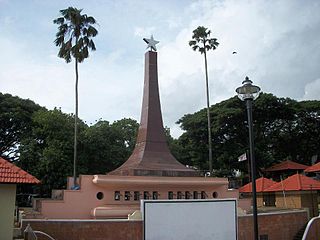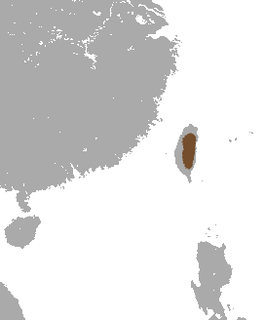
Gymnolaemata are a class of Bryozoans. Gymnolaemata are sessile, mostly marine organisms and grow on the surfaces of rocks, kelp, and in some cases on animals, like fish. Zooids are cylindrical or flattened. The lophophore is protruded by action of muscles pulling on the frontal wall. This order includes the majority of living bryozoan species.

Tāme Wairere Iti is a New Zealand Māori activist, artist, actor and social worker. Of Ngāi Tūhoe descent, Iti rose to prominence as a member of the protest group Ngā Tamatoa in 1970s Auckland, becoming a key figure of the Māori protest movement and the Māori renaissance. Since then, he has become a renowned activist for the rights of Māori and the process of co-governance and decolonisation.

Saxifraga oppositifolia, the purple saxifrage or purple mountain saxifrage, is a species of plant that is very common in the high Arctic and also some high mountainous areas further south, including northern Britain, the Alps and the Rocky Mountains.

Kuthuparamba is a town and a municipality in the Kannur district, state of Kerala, India. It is about 24 km south east of Kannur and 14 km east of Thalassery.

The fraternal myotis is a species of vesper bat native to East Asia.

Genovese basil is a cultivar of Ocimum basilicum. It is one of the most popular basils for culinary use, particularly for its use in pesto, the traditional Genoese sauce. The name "Basilico Genovese" is protected by the European Union with the Denominazione di Origine Protetta certification. Genoese basil is produced in the provinces of Genoa, Savona and Imperia.

Scolopendridae is a family of large centipedes. Nearly all species in this family have four ocelli on each side of the head and only 21 pairs of legs, but there are exceptions: two scolopendrid species feature more legs, and some scolopendrid species are eyeless and blind. Three Asian members of this family, Scolopendra cataracta, Scolopendra paradoxa, and Scolopendra alcyona, are known to show amphibious behaviour.

The fringed long-footed myotis is a species of vesper bat in the family Vespertilionidae. It is found in China, Taiwan and Hong Kong.

The Burmese whiskered myotis or Burmese whiskered bat is a species of vesper bat. It is found in China, India, Myanmar, Laos, and Vietnam.

The lesser Taiwanese shrew is a rare species of shrew in the Soricomorpha order.
Episoriculus is a genus of shrew in the red-toothed shrew subfamily. Its common is brown-toothed shrew. It has been described as a subgenus to Soriculus in the past. The genus occurs at a number of locations in Asia, including Nepal and China.
The eastern barbastelle or Asian barbastelle is a species of vesper bat found throughout much of Asia, from Afghanistan to Taiwan.

Carditida is an order of marine bivalve clams.
The Oriental serotine is a species of bat in the family Vespertilionidae. It is widespread and found throughout Asia.

Ethmostigmus trigonopodus is a species of centipede in the family Scolopendridae.

The Socotran pipistrelle or Lanza's pipistrelle is an endangered species of vesper bat in the family Vespertilionidae. It is endemic to Socotra Island in Yemen, and is the only mammal thought to be endemic to the island.
Ognev's serotine is a species of vesper bat found in western and central Asia.
Kozlov's long-eared bat is a species of vesper bat in the family Vespertilionidae. It is found in southern Mongolia and adjacent parts of China.
Strelkov's long-eared bat is a species of vesper bat found in mountainous regions of Central Asia.
Ward's long-eared bat is a species of vesper bat in the family Vespertilionidae. It is found in mountainous regions of South Asia and adjoining regions.












